-
 Bitcoin
Bitcoin $83,456.2183
-2.10% -
 Ethereum
Ethereum $1,581.6766
-3.19% -
 Tether USDt
Tether USDt $1.0000
0.01% -
 XRP
XRP $2.0754
-3.06% -
 BNB
BNB $581.5622
-0.87% -
 Solana
Solana $125.4498
-3.64% -
 USDC
USDC $1.0000
0.01% -
 TRON
TRON $0.2517
-0.62% -
 Dogecoin
Dogecoin $0.1544
-3.43% -
 Cardano
Cardano $0.6075
-5.31% -
 UNUS SED LEO
UNUS SED LEO $9.3772
-0.61% -
 Chainlink
Chainlink $12.2969
-2.78% -
 Avalanche
Avalanche $18.7882
-6.65% -
 Stellar
Stellar $0.2347
-2.65% -
 Toncoin
Toncoin $2.8697
-1.77% -
 Shiba Inu
Shiba Inu $0.0...01167
-2.16% -
 Sui
Sui $2.0829
-4.50% -
 Hedera
Hedera $0.1570
-5.62% -
 Bitcoin Cash
Bitcoin Cash $319.7787
-2.88% -
 Litecoin
Litecoin $75.6696
-3.49% -
 Polkadot
Polkadot $3.5301
-3.64% -
 Dai
Dai $1.0000
0.01% -
 Bitget Token
Bitget Token $4.2258
-1.94% -
 Hyperliquid
Hyperliquid $15.0950
-6.64% -
 Ethena USDe
Ethena USDe $0.9991
0.00% -
 Pi
Pi $0.6072
-18.52% -
 Monero
Monero $216.6818
2.44% -
 Uniswap
Uniswap $5.1792
-3.47% -
 OKB
OKB $52.2750
0.70% -
 Pepe
Pepe $0.0...07035
-3.66%
How secure is Binance?
Binance uses multi-layered security, including cold storage and advanced risk management, but user responsibility (strong passwords, 2FA) is crucial; no system is perfectly secure.
Feb 27, 2025 at 07:48 pm
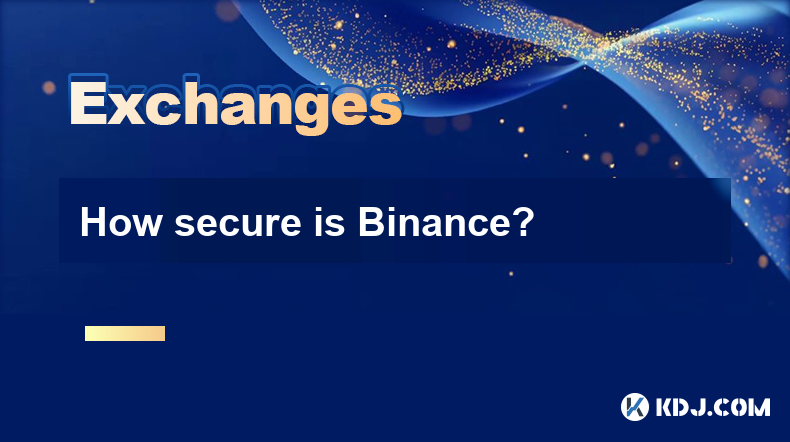
How Secure is Binance? A Deep Dive into Binance's Security Measures
Key Points:
- Binance's multi-layered security architecture incorporates a range of measures designed to protect user assets. This includes, but is not limited to, robust wallet security, advanced risk management systems, and a dedicated security team.
- While Binance boasts impressive security features, no exchange is entirely immune to risk. Understanding the inherent vulnerabilities within the cryptocurrency ecosystem and Binance's approach to mitigating them is crucial.
- User responsibility plays a significant role in overall security. Implementing strong passwords, enabling two-factor authentication (2FA), and regularly reviewing account activity are vital for minimizing personal risk.
- Binance's security record, while largely positive, has seen incidents, prompting continuous improvements and adaptations to its security protocols. Transparency regarding these incidents and subsequent actions is key to maintaining user trust.
- The regulatory landscape surrounding cryptocurrency exchanges significantly impacts security. Compliance with regulations, wherever applicable, demonstrates a commitment to security and responsible operation.
Understanding Binance's Security Measures:
- Wallet Security: Binance employs a multi-signature cold storage system for the vast majority of its users' digital assets. This means that multiple private keys are required to authorize any transaction, making it significantly harder for hackers to gain unauthorized access and drain funds. The cold storage wallets are offline, reducing their vulnerability to online attacks such as phishing and malware. Binance utilizes a combination of hardware security modules (HSMs) and other advanced cryptographic techniques to protect these private keys. The specific technologies and methodologies are generally not publicly disclosed for security reasons, but the general principle of multi-signature cold storage is a widely accepted best practice in the industry. Furthermore, Binance employs sophisticated risk management systems to monitor transactions in real-time, identifying and flagging any suspicious activity. These systems utilize machine learning algorithms and other advanced analytics to detect anomalies that might indicate fraudulent behavior. The level of sophistication of these systems is constantly evolving, as hackers continue to develop new techniques. Binance's investment in these systems is a significant factor in its overall security posture. The implementation of these technologies, however, doesn’t eliminate all risk, as no system is perfectly impenetrable.
- Advanced Risk Management: Beyond cold storage, Binance's security strategy extends to proactive risk mitigation. This includes sophisticated monitoring systems that analyze transaction patterns for anomalies indicative of malicious activity. These systems leverage machine learning algorithms to identify unusual behaviors, such as unusually large withdrawals or transactions originating from known compromised IP addresses. Real-time alerts are generated for suspicious activity, allowing Binance's security team to investigate and take appropriate action. This proactive approach is critical in preventing attacks before they can cause significant damage. The team employs a range of tools and techniques, including threat intelligence feeds, to stay ahead of emerging threats. They also actively collaborate with other security researchers and industry partners to share information and improve collective security. The complexity and sophistication of these systems are continuously upgraded to counter the evolving tactics of cybercriminals. The effectiveness of these systems relies heavily on the continuous improvement and adaptation of its algorithms and processes.
- Security Team and Incident Response: Binance boasts a dedicated team of security professionals with extensive experience in cybersecurity, blockchain technology, and fraud prevention. This team is responsible for monitoring the platform, responding to security incidents, and continually improving security measures. Their expertise encompasses a broad range of skills, from penetration testing and vulnerability analysis to incident response and forensic investigation. A robust incident response plan is in place to ensure that any security breaches are handled swiftly and effectively. This plan outlines clear procedures for identifying, containing, and remediating security incidents, minimizing potential damage and protecting user assets. The team's effectiveness is a critical factor in Binance's overall security. The team's proactive approach and commitment to continuous improvement are vital in maintaining the platform's security posture. However, the effectiveness of any security team depends on the resources allocated and the evolving nature of cyber threats.
- User Responsibility and Security Best Practices: While Binance implements robust security measures, user responsibility remains paramount. Users are encouraged to adopt strong passwords, enabling two-factor authentication (2FA) – ideally using an authenticator app rather than SMS-based 2FA – and regularly reviewing their account activity for any unauthorized transactions. Understanding phishing scams and malware is crucial. Users should be wary of suspicious emails, links, and downloads that might attempt to steal their login credentials or private keys. Education and awareness are key to preventing user-related security breaches. Binance provides resources and educational materials to help users understand and implement these security best practices. However, the ultimate responsibility for protecting their assets rests with the users themselves. The implementation of strong security practices by users significantly enhances the overall security of the platform, complementing the efforts of Binance's security team.
- Regulatory Compliance and Transparency: Binance's commitment to regulatory compliance, where applicable, demonstrates a commitment to operating within a framework that prioritizes security and user protection. Compliance with regulations often involves implementing stringent security protocols and adhering to specific standards. Transparency regarding security incidents and the measures taken to address them is crucial for maintaining user trust. Openly communicating about security vulnerabilities and the steps taken to mitigate them builds confidence in the platform's security posture. However, the regulatory landscape surrounding cryptocurrencies is constantly evolving, and compliance requirements vary significantly across different jurisdictions. Binance's ability to adapt to these changes and maintain compliance is an ongoing process. The degree of transparency and the responsiveness to regulatory requirements are important indicators of a platform's commitment to security.
FAQs:
Q: Is Binance truly secure?
A: Binance employs numerous advanced security measures, but no system is perfectly secure. The security of Binance, like any cryptocurrency exchange, relies on a combination of technological safeguards, proactive risk management, a dedicated security team, and user responsibility. While Binance has a strong security record, the risk of breaches remains.
Q: What happens if Binance is hacked?
A: Binance's incident response plan outlines procedures for handling security breaches. This typically involves identifying the breach, containing the damage, investigating the cause, and implementing measures to prevent future incidents. While Binance aims to minimize any losses, the extent of any impact would depend on the nature and scope of the breach.
Q: How can I protect my Binance account?
A: Utilize strong, unique passwords, enable two-factor authentication (preferably using an authenticator app), regularly review your account activity, be wary of phishing scams and malware, and keep your software updated. Avoid sharing your login credentials or private keys with anyone.
Q: What security certifications does Binance hold?
A: Binance doesn't publicly list specific security certifications in the same way some traditional financial institutions do. However, its security measures are regularly audited internally and possibly by external firms (though these details are usually not publicly released for security reasons). The focus is on continuous improvement of its security infrastructure rather than obtaining specific certifications.
Q: What is Binance doing to prevent future security incidents?
A: Binance continually invests in upgrading its security infrastructure, employing advanced technologies, and expanding its security team. They also actively engage in threat intelligence gathering and collaboration with other security experts to stay ahead of emerging threats and vulnerabilities. They regularly review and update their security protocols based on the latest industry best practices and emerging threats.
Disclaimer:info@kdj.com
The information provided is not trading advice. kdj.com does not assume any responsibility for any investments made based on the information provided in this article. Cryptocurrencies are highly volatile and it is highly recommended that you invest with caution after thorough research!
If you believe that the content used on this website infringes your copyright, please contact us immediately (info@kdj.com) and we will delete it promptly.
- Bitcoin (BTC) Dips Alongside Stock Futures as Nvidia Corp. NVDA Shares Tumble
- 2025-04-16 13:15:13
- Bitcoin (BTC) Faces a Critical Test as Global Markets Remain Volatile and Macroeconomic Tensions Escalate
- 2025-04-16 13:15:13
- Bitcoin (BTC) has been moving between $80,00 and $85,00 for the fourth day as the uncertain market for the U.S.-China trade dispute continues.
- 2025-04-16 13:10:12
- MicroStrategy (Formerly ) Doubles Down on BTC After a Performance in Q1 2025
- 2025-04-16 13:10:12
- Real-world asset-focused coin MANTRA OM/USD Topped The Cryptocurrency Gainers List On Tuesday
- 2025-04-16 13:05:13
- Semler Scientific Files to Issue $500M in Securities Following $30M DOJ Settlement
- 2025-04-16 13:05:13
Related knowledge

How do I contact customer service on Binance to resolve issues?
Mar 16,2025 at 04:30am
Key Points:Binance's customer service is primarily self-service, relying heavily on its help center and FAQs.Direct contact methods are limited, with email support being the most common route for non-urgent issues.Urgent issues may require using the in-app support system, though response times can vary.Understanding Binance's support structure and utili...
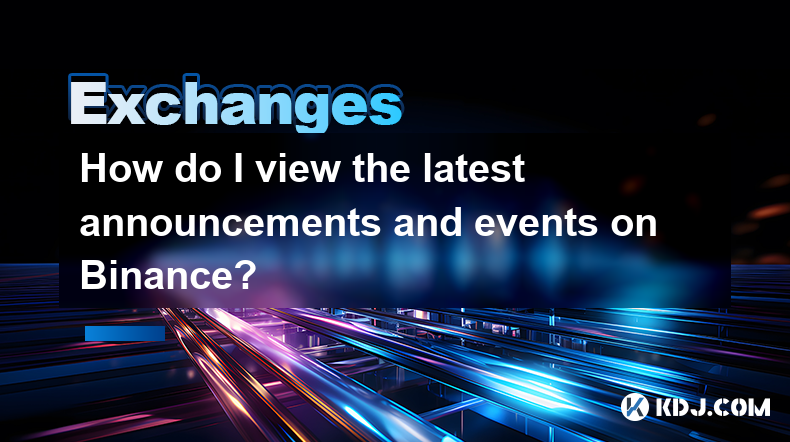
How do I view the latest announcements and events on Binance?
Mar 18,2025 at 10:18pm
Key Points:Binance utilizes multiple channels for disseminating announcements and events.The official Binance website is the primary source.Binance's social media platforms offer timely updates.Email subscriptions keep users informed about relevant announcements.Third-party aggregators can supplement official channels but require caution.How Do I View t...

How do I set up a subaccount on Binance?
Mar 14,2025 at 01:50pm
Key Points:Binance does not offer traditional "subaccounts" in the sense of separate accounts with independent logins under a master account.Instead, Binance offers features like user-defined labels for better portfolio management and API keys for automated trading. These provide functionality similar to subaccounts.Setting up these features involves na...
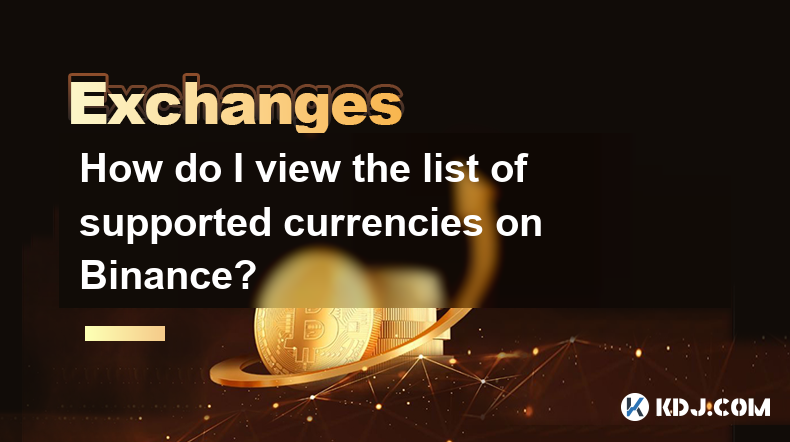
How do I view the list of supported currencies on Binance?
Mar 15,2025 at 05:35am
Key Points:Binance supports a vast and frequently updated list of cryptocurrencies. There's no single, static list.Finding supported currencies requires navigating Binance's website or app interfaces.Different sections of the exchange show different subsets of supported currencies (e.g., trading, staking, etc.).The availability of specific cryptocurrenc...
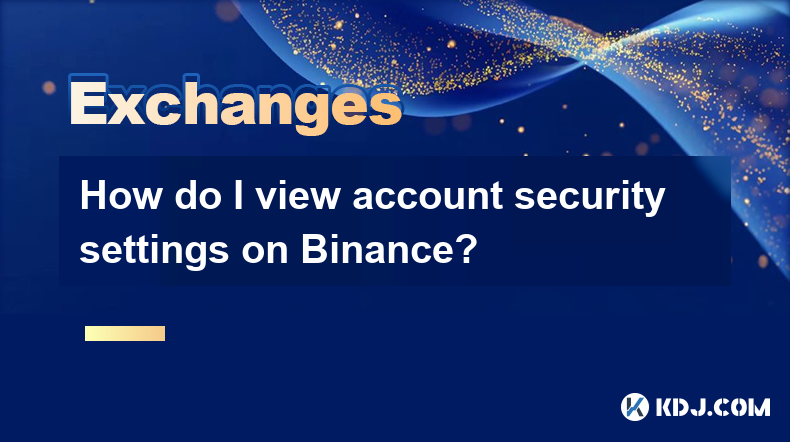
How do I view account security settings on Binance?
Mar 15,2025 at 08:40pm
Key Points:Binance's security settings are spread across multiple sections of your account. This article will guide you through each crucial area.Understanding and implementing these settings is paramount to protecting your cryptocurrency assets.We'll cover two-factor authentication (2FA), withdrawal whitelists, and other essential security features.Reg...
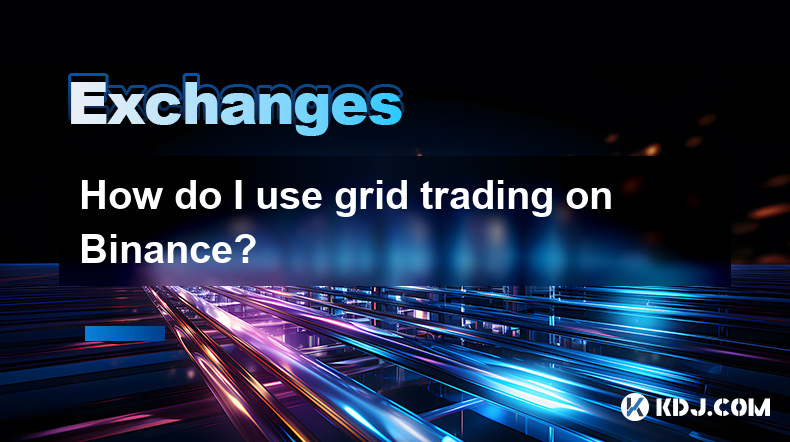
How do I use grid trading on Binance?
Mar 14,2025 at 04:25pm
Key Points:Grid trading on Binance involves automatically buying low and selling high within a defined price range.Binance offers a built-in grid trading bot, simplifying the process.Setting up a grid bot requires defining parameters like price range, grid quantity, and investment amount.Risk management is crucial, as losses are possible despite the aut...

How do I contact customer service on Binance to resolve issues?
Mar 16,2025 at 04:30am
Key Points:Binance's customer service is primarily self-service, relying heavily on its help center and FAQs.Direct contact methods are limited, with email support being the most common route for non-urgent issues.Urgent issues may require using the in-app support system, though response times can vary.Understanding Binance's support structure and utili...

How do I view the latest announcements and events on Binance?
Mar 18,2025 at 10:18pm
Key Points:Binance utilizes multiple channels for disseminating announcements and events.The official Binance website is the primary source.Binance's social media platforms offer timely updates.Email subscriptions keep users informed about relevant announcements.Third-party aggregators can supplement official channels but require caution.How Do I View t...

How do I set up a subaccount on Binance?
Mar 14,2025 at 01:50pm
Key Points:Binance does not offer traditional "subaccounts" in the sense of separate accounts with independent logins under a master account.Instead, Binance offers features like user-defined labels for better portfolio management and API keys for automated trading. These provide functionality similar to subaccounts.Setting up these features involves na...

How do I view the list of supported currencies on Binance?
Mar 15,2025 at 05:35am
Key Points:Binance supports a vast and frequently updated list of cryptocurrencies. There's no single, static list.Finding supported currencies requires navigating Binance's website or app interfaces.Different sections of the exchange show different subsets of supported currencies (e.g., trading, staking, etc.).The availability of specific cryptocurrenc...

How do I view account security settings on Binance?
Mar 15,2025 at 08:40pm
Key Points:Binance's security settings are spread across multiple sections of your account. This article will guide you through each crucial area.Understanding and implementing these settings is paramount to protecting your cryptocurrency assets.We'll cover two-factor authentication (2FA), withdrawal whitelists, and other essential security features.Reg...

How do I use grid trading on Binance?
Mar 14,2025 at 04:25pm
Key Points:Grid trading on Binance involves automatically buying low and selling high within a defined price range.Binance offers a built-in grid trading bot, simplifying the process.Setting up a grid bot requires defining parameters like price range, grid quantity, and investment amount.Risk management is crucial, as losses are possible despite the aut...
See all articles























































































